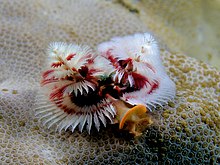CANADA HAS A LOT OF LAKES.
Canada is the second largest country in the world, so it may not come as a surprise that it has a lot of lakes. But it might shock you that the country has more than half of all the natural lakes in the world. An impressive nine percent of the country is covered in fresh water.
THE ENTIRETY OF THE WORLD’S POPULATION COULD EASILY FIT IN TEXAS.
If the entire world were as densely populated as New York City, the whole population would only cover 250,404 square miles. That means the entire world could fit into the state of Texas. For comparison, if the world had the same population density as Houston, Texas, it would cover 1,769,085 square miles. Even then, being able to hypothetically fit over 7 billion people in an area smaller than half the United States is pretty impressive.
AUSTRALIA MAY BE SURROUNDED BY WATER, BUT IT DOESN’T HAVE THE WORLD’S LONGEST COASTLINE.
Being its own continent and completely surrounded by water, you’d think Australia would easily have the honor of being the country with the longest coastline. However, that title goes to Canada. Canada has 152,100 miles of coastline, compared to Australia’s measly 16,000 miles. In fact, Australia ranks seventh on the list of the world’s longest coastlines, coming in behind Indonesia, Greenland, Russia, Philippines, and Japan.
MT. CHIMBORAZO IS CLOSER TO SPACE THAN MT. EVEREST.
Mount Everest is the tallest mountain on Earth, so it would stand to reason that the top of the mountain would be the highest point on Earth (and therefore closest to space). But when you remember that Earth is slightly oval-shaped, things get interesting. Our planet is slightly inflated around the equator, meaning countries like Ecuador and Kenya have a bit of an edge. With this added elevation, the top of Ecuador’s Mount Chimborazo (which is only 20,564 feet tall) is closest to the stars.
ANTARCTICA IS HOME TO ALMOST ALL OF THE WORLD’S FRESH WATER.
At 14 million square kilometers (about 5,400,000 square miles), the ice sheet in Antarctica is the largest solid ice mass on the planet. The enormous frozen structure contains about 90 percent of all the fresh water on Earth.
CHINA AND RUSSIA ARE BOTH BORDERED BY 14 COUNTRIES.
Although China is just a little more than half the size of Russia—the largest country in the world—they share the same number of land neighbors. The 14 countries bordering China are: India, Pakistan, Afghanistan, Tajikistan, Kyrgyzstan, Kazakhstan, Mongolia, Russia, North Korea, Vietnam, Laos, Myanmar, Bhutan, and Nepal.


























